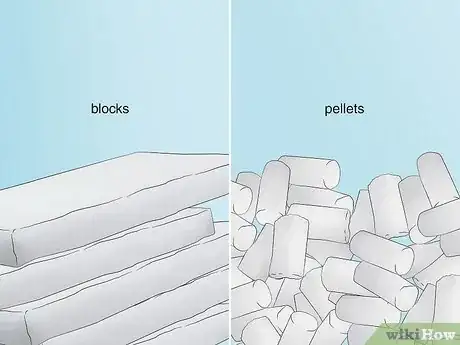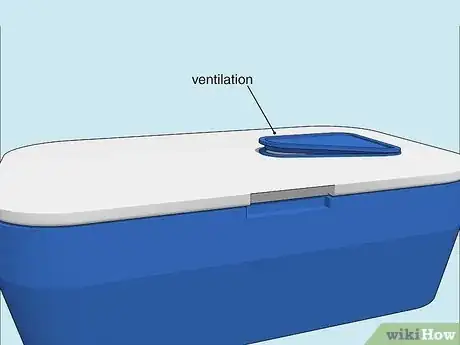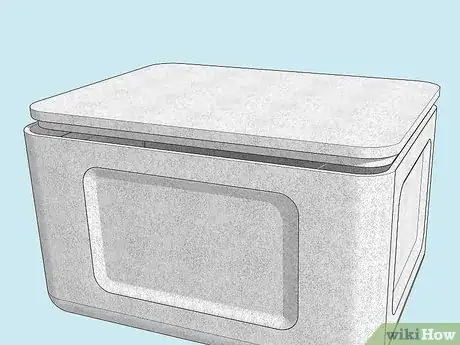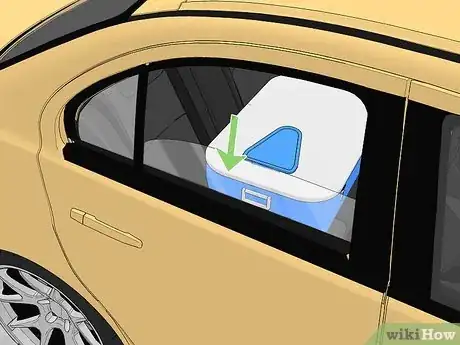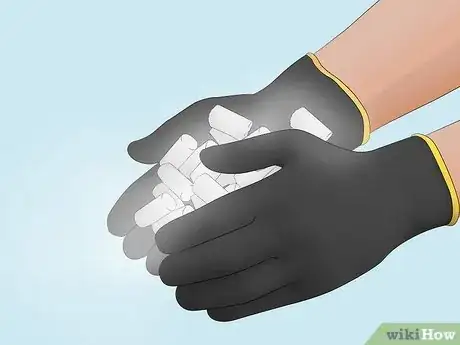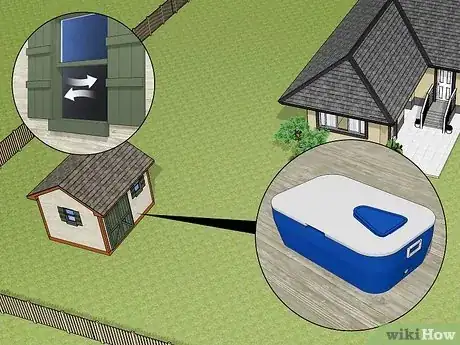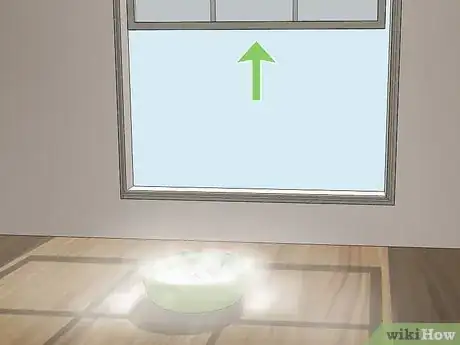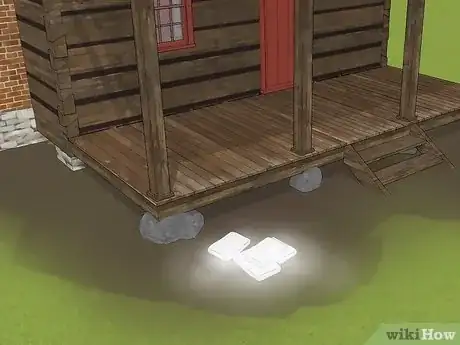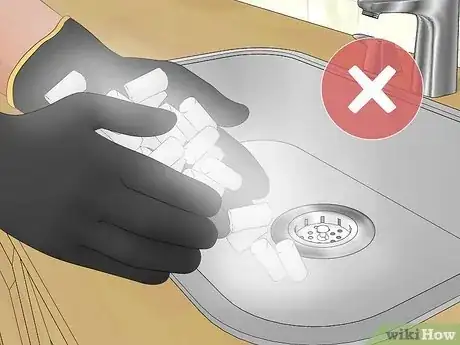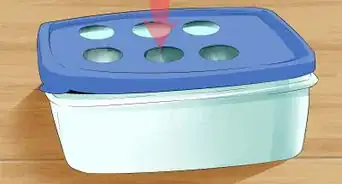This article was co-authored by wikiHow staff writer, Amber Crain. Amber Crain has been a member of wikiHow’s writing staff for the last six years. She graduated from the University of Houston where she majored in Classical Studies and minored in Painting. Before coming to wikiHow, she worked in a variety of industries including marketing, education, and music journalism. She's been a radio DJ for 10+ years and currently DJs a biweekly music program on the award-winning internet radio station DKFM. Her work at wikiHow supports her lifelong passion for learning and her belief that knowledge belongs to anyone who desires to seek it.
wikiHow marks an article as reader-approved once it receives enough positive feedback. This article received 29 testimonials and 100% of readers who voted found it helpful, earning it our reader-approved status.
This article has been viewed 1,040,991 times.
Learn more...
Buying dry ice might seem a little intimidating, but the process is a breeze as long as you know how to safely handle and store it. In this article, we'll explain how and where to buy dry ice, the proper way to store it, and how to dispose of any leftover dry ice. We'll also include important safety tips along the way so the entire process feels seamless and secure. If you're ready to get started with dry ice, scroll on down!
Things You Should Know
- Buy dry ice online or at your local grocery or big box store. Some sellers may require you to be 18 years old to buy dry ice.
- Place blocks of dry ice inside an insulated cooler with ventilation to transport and store it. Crack your car window when you're transporting dry ice.
- Handle dry ice with insulated gloves or large tongs. Touching dry ice with your bare hands can cause severe frostbite.
- Dispose of dry ice by leaving it at room temp in a well-ventilated space for 24 hours and let the disposal area air out before entering.
Steps
Buying and Transporting Dry Ice
-
1Purchase dry ice online or at your local grocery or big box store. Any person can buy dry ice, but some sellers may require you to be at least 18 years old. Buy dry ice at chain grocery and super stores like Safeway, Walmart, Albertsons, Whole Foods, Kroger, Publix, Wegmans, HEB, and Costco. Some of the larger gas stations out there, like 7-Eleven and Sheetz, often sell dry ice.
- Since dry ice has a short shelf-life, pick it up right before you plan on using it. Dry ice will begin to sublimate (evaporate) within 24 hours.[1]
- If you need to buy dry ice in bulk, it'll probably be cheaper to go through dry ice suppliers rather than individual sellers. Google dry ice suppliers and check out the options available.
-
2Look for dry ice in block or pellet form. Dry ice typically comes in block form. Things like performing school experiments and creating fog effects require blocks of dry ice. Dry ice is sold by weight, and the price ranges anywhere from $1.00 to $3.00 per pound.
- The pellet form of dry ice is mainly used for dry ice blasting to clean surfaces, or for medical transportation.
Advertisement -
3Place blocks of dry ice inside an insulated cooler with ventilation. Your freezer isn't cold enough for dry ice, but an insulated ice chest will do the trick for transportation and storage. Always choose an insulated container with ventilation; never store dry ice in an airtight container. Dry ice melts from a solid directly into a gas, and an airtight container will cause gas to build up until it bursts.[2]
- A styrofoam chest with a loose fitting lid is another great storage option.
- Open and close the container as little as possible. To slow down sublimation even more, fill the open space in the cooler with wadded paper to limit dead space.[3]
-
4Put the insulated cooler in your car and roll down the windows. Remember that dry ice is solid carbon dioxide, which makes it very harmful if inhaled in large quantities. The dry ice is in a ventilated container, so it's always seeping out just a bit. When you're traveling with dry ice in the car, open the window so the carbon dioxide doesn't build up around you.[4]
- Fresh air is especially important if you're transporting dry ice for longer than 15 minutes. Being in a poorly ventilated area with dry ice can cause rapid breathing and headaches and can be lethal if breathed over long periods.[5]
- Symptoms of carbon dioxide exposure include headache, difficulty breathing, nausea, and vomiting. If you experience symptoms like these after being around dry ice, make an appointment with your doctor or head to the emergency room.[6]
Handling and Storing Dry Ice
-
1Handle dry ice with insulated gloves or large tongs. Never handle dry ice with your bare hands! Since dry ice is extremely cold, it can cause severe frostbite if it touches your bare skin. Insulated gloves or an oven mitt are the best options since the blocks will be easier to maneuver with your hands (but you can use tongs in a pinch).[7]
- A towel can also work, but won't offer the same protection as gloves.
- If your skin is burned by dry ice contact, treat the burn like a typical burn. If your skin blisters or comes off, treat the area with antibiotic ointment and wrap with a bandage. Consult a doctor immediately in cases of extreme burns.[8]
-
2Store dry ice in a well-ventilated space and use it within 24 hours. Keeping large quantities of dry ice in airtight areas can create an oxygen deficient atmosphere and a buildup of carbon dioxide in the space, so put the cooler somewhere safe. Make sure you store dry ice away from young children and pets, as well. The dry ice will sublimate within 24 hours, so use it as soon as you can to get the most bang for your buck.[9]
- A locked storage shed in your backyard will have good air circulation and won't be in danger of suffocating people or animals.
- Open doors and windows immediately if the dry ice is spilled to ventilate the space faster.
- Dry ice is heavier than oxygen and will accumulate in low areas. Avoid putting your face near pits or other low, confined areas as these places will have the highest concentration of carbon dioxide.[10]
- Air out storage areas that have previously housed dry ice before entering.
-
3Dispose of dry ice at room temp in a well-ventilated space. If you find yourself with extra dry ice, remember that it's constantly undergoing sublimation and simply needs to be left alone in order to evaporate. Make sure the dry ice is safely out of reach of others for at least 24 hours.[11]
- Your backyard porch is a good place to dispose of dry ice. You can also use a fume hood to dispose of dry ice (if you have one).
- Never dispose of dry ice in the sewer, sink, toilet, or garbage disposal. You will likely freeze the water in the pipes and may even cause them to rupture. The extreme compactness of a pipe will also cause dry ice to expand quicker and may cause an explosion.[12]
Community Q&A
-
QuestionHow long will 2 lbs last in a styrofoam cooler or regular cooler?
 wikiHow Staff EditorThis answer was written by one of our trained team of researchers who validated it for accuracy and comprehensiveness.
wikiHow Staff EditorThis answer was written by one of our trained team of researchers who validated it for accuracy and comprehensiveness.
Staff Answer wikiHow Staff EditorStaff AnswerDry ice starts to sublimate (evaporate) as soon as you buy it; it will take about 24 hours to completely sublimate. Be sure to buy your dry ice right before you need to use it so you get the most bang for your buck.
wikiHow Staff EditorStaff AnswerDry ice starts to sublimate (evaporate) as soon as you buy it; it will take about 24 hours to completely sublimate. Be sure to buy your dry ice right before you need to use it so you get the most bang for your buck. -
QuestionCan I put dry ice in a plastic cauldron filled with water to create fog?
 wikiHow Staff EditorThis answer was written by one of our trained team of researchers who validated it for accuracy and comprehensiveness.
wikiHow Staff EditorThis answer was written by one of our trained team of researchers who validated it for accuracy and comprehensiveness.
Staff Answer wikiHow Staff EditorStaff AnswerYes, that should be totally fine (and look pretty cool, too). Just make sure no one sticks their hands into the cauldron and open the windows and/or doors in your space so there's no gas buildup in the room (since it's dangerous to breathe the gas in a confined space).
wikiHow Staff EditorStaff AnswerYes, that should be totally fine (and look pretty cool, too). Just make sure no one sticks their hands into the cauldron and open the windows and/or doors in your space so there's no gas buildup in the room (since it's dangerous to breathe the gas in a confined space). -
QuestionAre IGLOO containers safe to transport dry ice with frozen food?
 wikiHow Staff EditorThis answer was written by one of our trained team of researchers who validated it for accuracy and comprehensiveness.
wikiHow Staff EditorThis answer was written by one of our trained team of researchers who validated it for accuracy and comprehensiveness.
Staff Answer wikiHow Staff EditorStaff AnswerIt should be fine as long as the IGLOO container is insulated and has built-in ventilation. Never put dry ice in an air-tight container of any kind since it could explode.
wikiHow Staff EditorStaff AnswerIt should be fine as long as the IGLOO container is insulated and has built-in ventilation. Never put dry ice in an air-tight container of any kind since it could explode.
Warnings
- Do not store dry ice in a completely airtight container. The sublimation of dry ice to carbon dioxide will cause the container to expand and possibly explode.⧼thumbs_response⧽
- Avoid keeping dry ice in cellars, basements, cars, or other poorly ventilated areas.⧼thumbs_response⧽
- Don't store dry ice in metal or glass containers, as an explosion can create shrapnel which can cause cuts or other serious injuries.⧼thumbs_response⧽
- Avoid leaving dry ice on tiled or solid surfaced counter tops as the extreme cold could crack it.⧼thumbs_response⧽
- Dry ice can cause a violent eruption if packed too tightly. Some people have been brought up on felony criminal charges for purposely confining dry ice until it explodes, creating a dry ice "bomb."⧼thumbs_response⧽
- Never eat, chew, or swallow dry ice.⧼thumbs_response⧽
References
- ↑ https://www.safety.rochester.edu/ih/dryicehandle.html
- ↑ https://www.safety.rochester.edu/ih/dryicehandle.html
- ↑ http://www.ecu.edu/cs-admin/oehs/ih/Dry-Ice.cfm
- ↑ https://www.weather.gov/bmx/kidscorner_dryicesafety
- ↑ http://www.dryiceinfo.com/safe.htm
- ↑ https://www.health.ny.gov/publications/7081/
- ↑ https://www.weather.gov/bmx/kidscorner_dryicesafety
- ↑ http://www.dryiceinfo.com/safe.htm
- ↑ https://www.weather.gov/bmx/kidscorner_dryicesafety
About This Article
Before purchasing dry ice, grab a plastic cooler or ice chest and a pair of gloves so you don't harm yourself while handling the dry ice. Then, head to a local grocery store that sells dry ice, buy however many blocks you will need, and place them inside your insulated container. When transporting the ice, make sure to roll down your vehicle’s windows to prevent carbon dioxide poisoning. Dry ice does not last very long, so use the product as soon as you can after purchasing it. To learn how to properly handle, store, and dispose of dry ice, scroll down!

